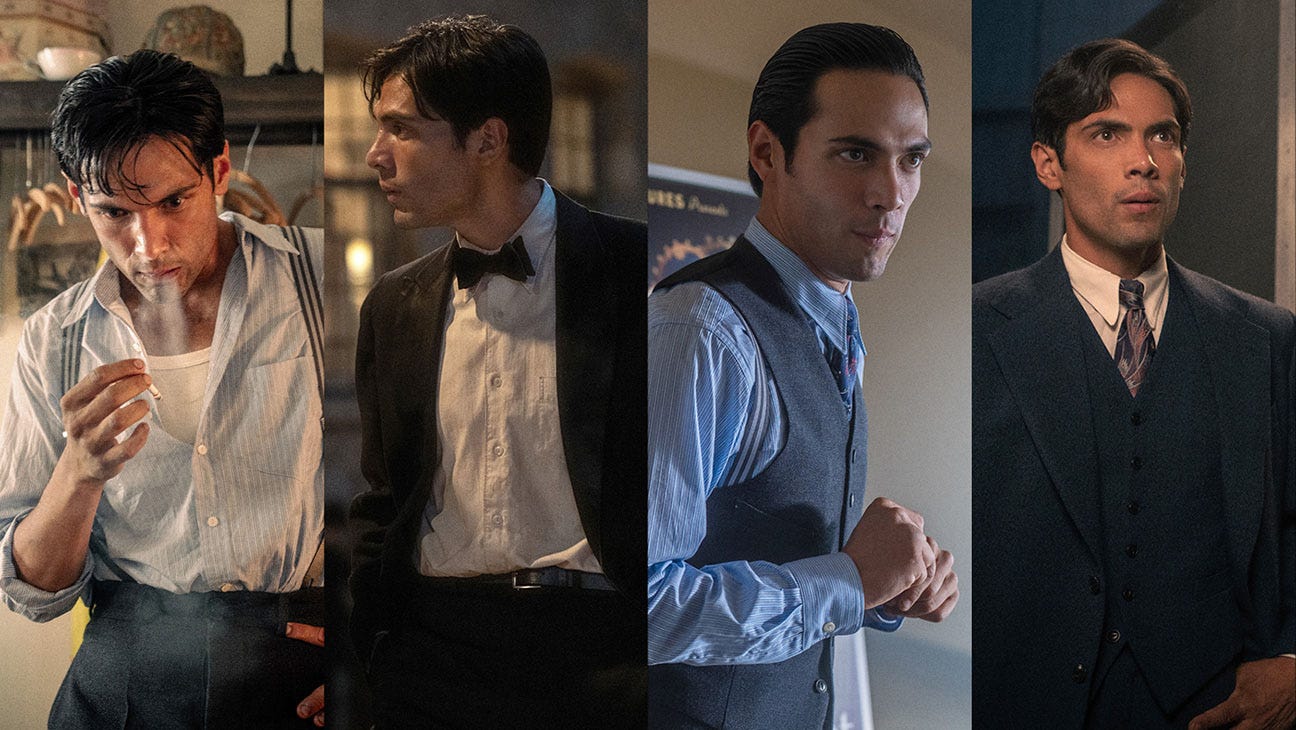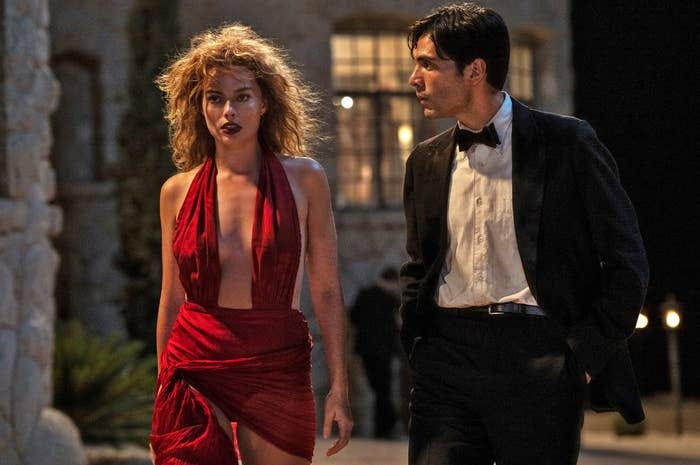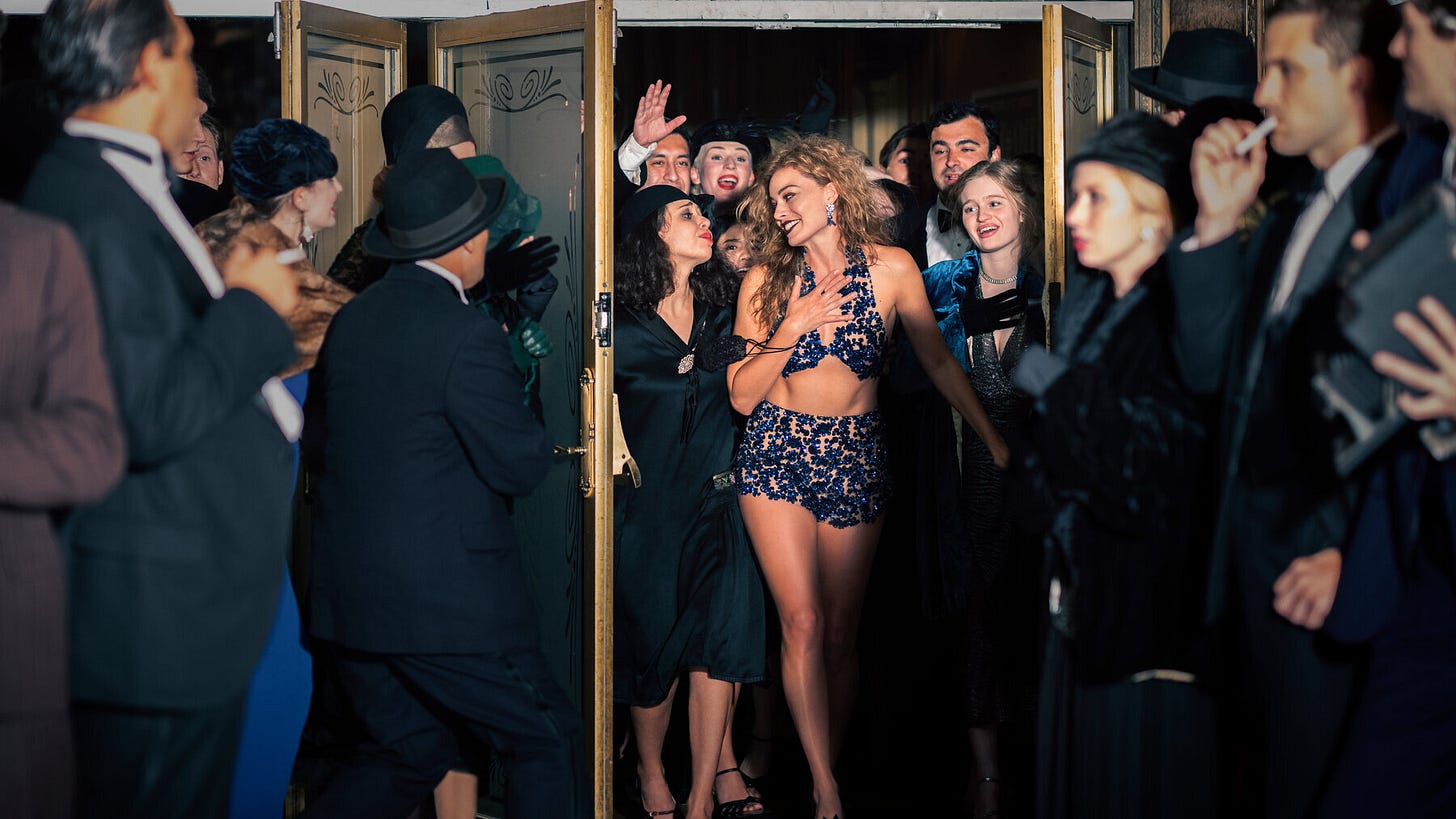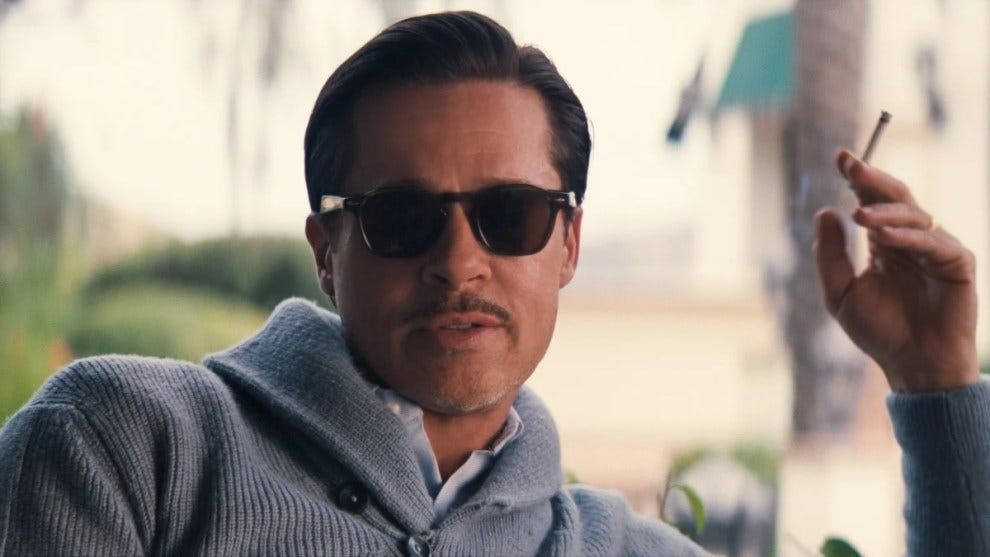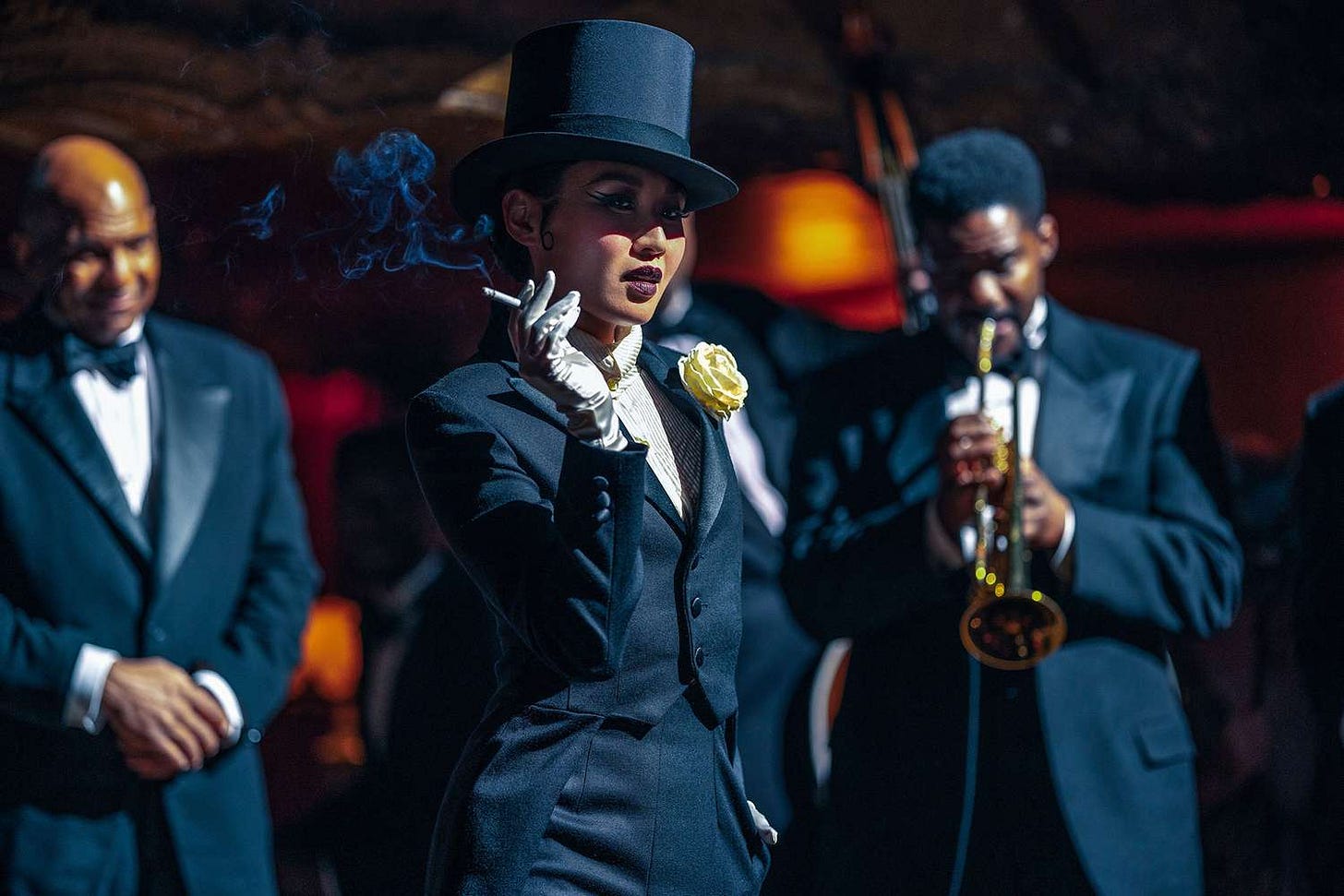2022 simultaneously feels like a long time ago and just yesterday. It somehow felt like a more innocent time - when we were beginning to come outside more and the prospect of this 4-year nightmare may be waning towards a conclusion. When I look back at that cursed year in film; however, I feel like we were getting it all wrong. Everything Everywhere All At Once swept the Oscars - I don’t need to reiterate my hot takes on that film. I felt like other films deserved to be recognized. Other films received a ton of press from Top Gun: Maverick for bringing people back to the movies, the second installment of James Cameron’s Avatar saga, and Elvis, Baz Luhrmann’s follow-up to The Great Gatsby that featured Austin Butler’s coming-out-party sporting his uncanny, authentic Elvis accent. All of these films were nominated for Best Picture at the Academy Awards. Amongst the heavy hitters of the year, there was one startling omission among the nominees - a film that took $80 million to produce. Of course I’m talking about Damien Chazelle’s Babylon, my favorite film of the year, and one of my ten favorite films of this decade so far.
Lauded a flop by fans and critics alike - the film went on to gross only $63 million at the box office and totaled 57% on Rotton Tomatoes - Babylon is one of the most misunderstood, underrated films that has come out in recent memory. When wunderkind Damien Chazelle announced his follow-up to La La Land, the musical starring Emma Stone and Ryan Gosling that is not synonymous with the Oscar’s biggest all-time moment, the production was shrouded in mystery. We had a title, and the names of some of the actors, but no additional context. Then in September Vanity Fair gave us exclusive stills from the film. Images of a beautiful, drunken Margot Robbie lacking back against the ground with a stogie in her mouth, elegant, yet debaucherous bacchanals, and Brad Pitt sitting alongside Diego Calva in perfectly-fitting tuxedos. Say no more, I said. I was sold. Babylon was since then my most hotly anticipated film of the year.
My boo thang and I saw Babylon during a matinee showing at the Alamo Drafthouse on opening weekend. It was 3 hours and 9 minutes, another deterrent for the prospective audience. I loved every minute of this epic, decades-long story of the early movie business. The film follows three (maybe five) characters from the late twenties through the thirties. Brad Pitt plays Jack Conrad, a fading movie star from the already bygone golden age of silent cinema. Margot Robbie is Nellie La Roy, a young upstart actress born on the wrong side of the tracks. Diego Calva, a relative newcomer to the scene plays Manny Torres, an assistant who rises the ranks to be a studio executive. Two other tertiary stories weren’t fully expressed: Sidney Palmer, a black trumpet player, and Lady Fay Zhu, a Chinese cabaret singer, who also ascended the ranks of Hollywood’s elite.
When you first see Manny, the film’s soul, he is an assistant to a rich movie producer who throws opulent parties at his Bel Air estate for actors, dancers, singers, and journalists. He wears dirty slacks and collared shirts with beat-up oxfords, the early twentieth century’s version of workwear. As he works his way up, we see his wardrobe includes cleaner shirts, full suits, and overcoats. The first twenty minutes of this film are like a drug-fueled rollercoaster. Picture Fear and Loathing in Las Vegas if it had taken place at Michael Rubin’s all-white 4th of July party. We see hundreds of raucous partygoers dressed in the nines - ball gowns, tuxedos, flapper dresses, headbands, party hats, the works. The film takes place in a period where the default outfit came with a shirt and slacks at a minimum, so going to a party with powerful pieces required guest to get dressed in their absolute best.
In these very long scenes, we see drugs and sex to thumping Jazz music throughout the mansion being consumed by people wearing their best clothes, in all phases of dress and undress. Many prudish moviegoers were instantly turned off by the film’s liberal use of nudity and sex during the 30-minute party scene, but what often gets lost is the number of playful homages to the silent film era in this scene. You see the close-ups, the overly dramatic acting, the sudden cuts to a woman screaming - all nods to a silent film era where the images on the screen needed to be exaggerated because we didn’t have sound. Without that added element, every image on the screen needed to drive home the point of the scene.
It’s in this party scene we see Nellie La Roy (Robbie) in a beautiful red party dress, a revealing piece that is perfect for her character. Clara Bow, a major starlet of the era, inspires her character. She is a gambler, drug fiend, alcoholic, and frequent party guest who doesn’t take her life too seriously while trying to break into the movie business. She flirts with men and women and dances outrageously to hot jazz in the wee hours of the morning. Her style doesn’t change much as she begins to rise in fame. She wears overalls with no shirt or bra underneath at a party late in the film. In a world full of manners, she is the sole free spirit in the film. She lives in a world where she is always told that whatever she’s doing is wrong, but she may just be ahead of her time. A woman living on her terms, giving no thought to what anyone else thinks about her, an insane phenomenon in the 1920s. Not until the studios want her to clean up her act does she begin to dress more elegantly. She tries to wear longer dresses and become more mannerable, but she crashes and burns. She sees how vapid the wealthy are and wants nothing to do with them. In the end, she is who she is, a beautiful, loose cannon coming from a broken and unstable environment. Her life is a party because she knows it can all be over at any moment. She’s meant to live life fast and loose.
The most elegant male dresser is Brad Pitt’s Jack Conrad character. Who can typically be found in a black tuxedo, but will occasionally lean into more comfortable styles like white trousers and a sweater. He represents the last of a dying generation, where people were dressed up for even modest occasions. He is always seen with his signature wayfarer glasses, opting for shawl collar sweaters over white dress shirts in his off-duty hours. He has a perfect combover and a finely shaved mustache. We know he is cool, but the movie is one long, slow unraveling for Jack as his time in the spotlight is drifting away. He is forced to confront a new reality. In a beautiful scene in the third act, Conrad has a conversation with an aging journalist, Elinor St. John who has made a career of following Hollywood’s elite. She tells him that his career is over and that he’ll never be a star again and gives a beautiful monologue about the nature of being an artist:
What happened was you thought the house needed you. It doesn't. Doesn't need you any more than it needs the roaches. And the roaches, knowing this, crawl back into the dark, lay low, and make it through. See, but you, you held the spotlight. It's those of us in the dark, the ones who just watch, who survive…And there'll be hundreds more like it, too. An earthquake could wipe this town off the map and wouldn't make a difference. It's the idea that sticks. There'll be a hundred more Jack Conrads. Hundred more me's. Hundred more conversations just like this one, over and over again, until God knows when. Because it's bigger than you….
But in a hundred years, when you and I are both long gone, any time someone threads a frame of yours through a sprocket, you will be alive again. You see what that means? One day, every person on every film shot this year will be dead. And one day, all those films will be pulled from the vaults, and all their ghosts will dine together, and adventure together, go to the jungle, to war together. A child born in 50 years will stumble across your image flickering on a screen and feel he knows you, like... like a friend, though you breathed your last before he breathed his first. You've been given a gift. Be grateful. Your time today is through, but you'll spend eternity with angels and ghosts.
It’s the emotional climax, the thesis statement of the film that still makes me emotional every time I watch it.
The final montage shows short, chronological snippets of famous films starting with primitive silent films through the advent of technicolor and into the modern age. There’s a controversial moment where Chazelle includes a three-second clip of James Cameron’s Avatar. I remember seeing several people on Twitter saying that it was unnecessary and “corny.” Seconds before that, an intertitle shows on the screen saying “Fin du cinema,” which I believe conveys a hidden meaning- because it was followed by scenes from modern films from the Lord of the Rings trilogy to The Matrix and several other films that include heavy use of CGI and effects. I believe Chazelle is trying to tell us that we had something beautiful with film and we ruined it with our overuse of technology and lack of original storytelling - a notion I agree with. More films like Past Lives, less like Endgame, please.
Detractors from the film will say it’s too long, too vulgar, maybe even too nihilistic, but I never felt that way. I love seeing the juxtaposition of beautiful clothing, synonymous with nighttime elegance against the sinful behaviors of the people wearing them. It’s a true jazz-age movie.
Beyond the debauchery, however; it’s a film about the love of craft. We see how much Chazelle loves movies and the process behind movie-making. There is so much in the film about the technical aspect of filmmaking that we average people wouldn't understand, yet he makes it easy to follow along. Chazelle’s film can be seen as a segment of a biography - the biography of film as an art form. It’s incredibly well researched from the way we see the post-production crew wrote the dialogue cards for silent films to the chaotic early scene on the Kinoscope (inspired by Paramount and Warner Brothers) lot to the admiration for Singing in the Rain.
I’m not a Chazelle apologist. I think Whiplash is a stronger film and La La Land is terribly overrated. I found myself captivated while watching Babylon I can see Chazelle’s boyhood dreams come true on the screen. It took him 15 years to write the script and he shot the film when he was 35 years old, so he was still an undergrad when he began writing. Babylon is a love letter to film, paying homage to the generation that brought movies to the forefront of the nation. It’s a beautiful story about artists: what it takes to be one, the triumphs and pitfalls of success. And it’s entertaining. It’s so godamn entertaining. I can watch it over and over again despite its runtime. A movie with a heart and a brain, and the social skills to be the life of the party. What more do you need at the end of the day?
Peace and Love





